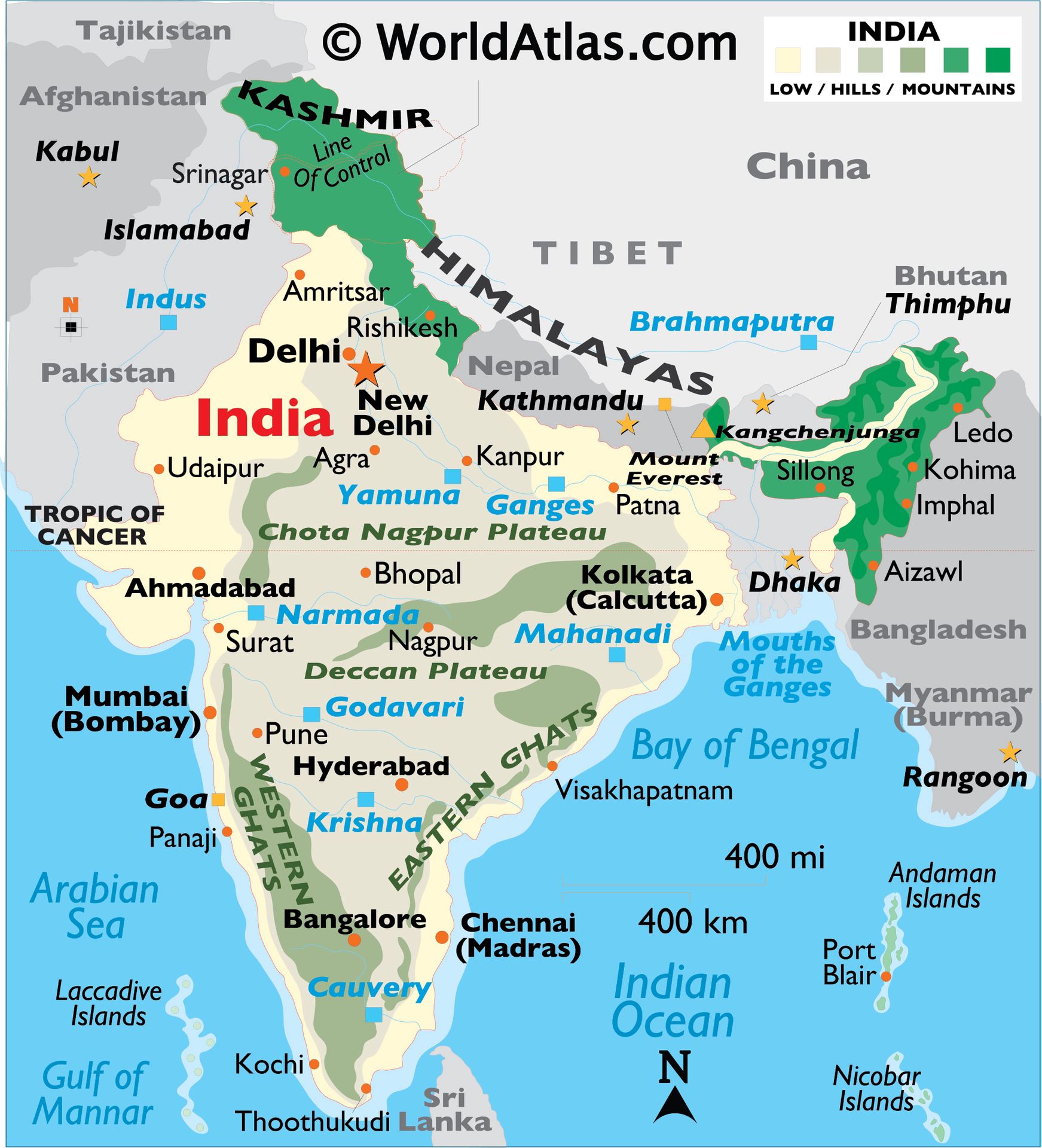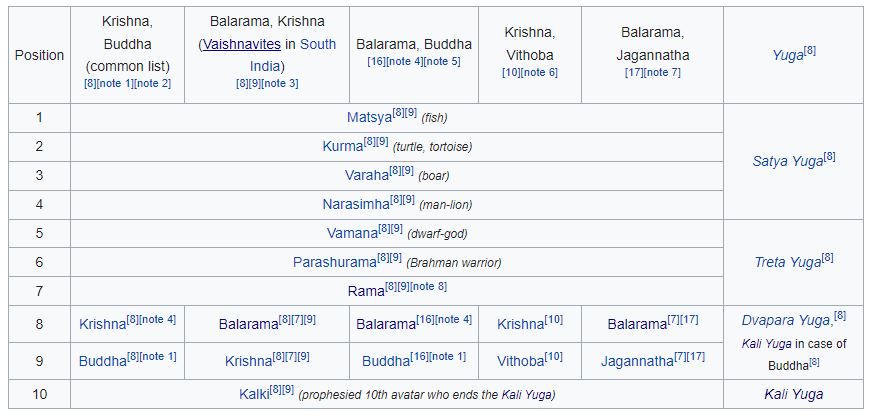Indian/Hindu Mythology - Gods and Goddesses
India, also known as the Republic of India, is a country in South Asia. The capital of India is New Delhi. Hinduism is one of the main religions practiced in India.
There are a total of 447 languages that are spoken in India. India doesn't have a national language, but the Official Languages required for "for Official Purpose of the Union" are Hindi and English. Other languages include Bengali, Marathi, Telugu, Tamil, Gujarati, Urdu, Kannada, Odia, Malayalam, Punjabi, Assamese.

The main deities form a trinity known as the trimurti or the trideva. The trimurti, the main male deities, manage the universe, each one pertaining to creation, maintenance, or destruction. The tridevi, the female deities, are Mata Parvati, Mata Laxmi, and Mata Saraswati.
These deities also have incarnations on earth, which are known as avatars. As such, Hindu deities have many names as they have many incarnations and forms.
Ayyappan: god of self-control.
Brahma: the Supreme God of Hindus and the creator of the cosmic universe. He is omniscient, omnipresent, formless, and genderless. Parmeshwara, Om, or Parmatma are other names he goes by. He is the creator of the triveda and all gods are seen as manifestations of Him. He is not widely worshipped despite being the primary deity. His incarnations include:
Agastya Avatar: known as a revered sage and influential scholar.
Chandra Avatar: known as the child of Anusaya, a woman who had supernatural powers.
Jamvanta Avatar
Kashyapa Avatar: known as one of the Saptarishis or the Seven Sages. He is the father of various species including Devtas, Danavas, humans, snakes, etc.
Kalidasa Avatar: known as a Sanskrit poet and dramatist.
Samudra Avatar
Sukra Avatar
Ganga: the personification of a holy river, Ganges, who is also worshipped as the goddess of purification and forgiveness. (Revision credit to: )
Ganesha: god of wisdom and auspiciousness. He is also known as Ganapati, Vinayaka, and Gajanana.
Kartikeya: god of war.
Lakshmi: goddess of wealth. She is also the wife of Lord Vishnu and assists him in maintaining the universe.
Parvati: goddess of fertility, love, beauty, marriage, bravery, harmony, children, and devotion. She is also the wife of Lord Shiva.
Mahadevi / Devi Shakti: the primordial Goddess. She possesses all riches, strength, fame, beauty, and knowledge.
Mahavidya is a group of ten aspects, or avatars, of Mahadevi, also referred to as the "Great Wisdom goddesses".
1) Kali: goddess of time, creation, destruction, and power. Also considered the Master of death and time. She is also said to be the Paramshakti, which is considered the supreme of all powers or the ultimate reality.
2) Tara: goddess of Protection.
3) Tripura Sundari / Shodashi / Lalita: the supreme form of Adi Parashakti.
4) Bhuvaneswari: the highest form of Adi Parashakti.
5) Chhinnamasta: goddess of self-sacrifice. She represents the ferocious aspect of Parvati. She is also a goddess of contradictions because she symbolizes both parts of the Devi as a life-taker and a life-giver.
6) Bhairavi: goddess of Kundalini.
7) Dhumavati: goddess of strife, loneliness, unfulfilled desires, and inauspicious things. She represents the fearsome aspect of Parvati.
8) Bagalamukhi / Bagalā: goddess who paralyzes enemies.
9) Matangi: goddess of wisdom, arts, the spoken word, and supernatural powers.
10) Kamalatmika: Bestower of wealth, happiness, and joy.
Navagrahas (requested addition credit to: RavinaDaris): nine planetary gods who form the Hindu zodiac system. They are often worshipped for good luck or to overcome adversity, bad luck, or misfortune that have arisen from past karmas or birth-related defects. Their names are related to their roles in that "Nava" means nine and "Graha" means planet or controlling, seizing, grasping, or cognizing power.
1) Surya: the Sun god (also referred to as the God of the Sun, Light, and Day), also called Ravi. He rides a chariot that has one wheel, which is pulled by seven white horses. These horses represent the seven colors of the white light and the seven days of the week. The sun is also considered the lord of the planets. He is one of the major five deities in Hinduism and is associated with Sunday and the number 1.
2) Chandra: the Moon god (also referred to as the God of the Moon, Night, Plants, and Vegetation). He is also known as Soma. He is usually shown with only his upper body from the upwards, while holding a lotus in each hand. He also rides a chariot drawn by ten horses. In some versions, the moon is mentioned as the king of the planets. He is one of the Dikpala, and is associated with Monday and the number 2.
3) Mangala: a ferocious god and known as the God of Aggression, also referred to as Angaraka or Lohit. He has four hands. In two of his hands, he holds weapons, which are usually a mace and a javelin, and the other two are held in abhaya and varada mudras. He uses a ram as his vehicle. His name is a word that connotes the planet, Mars. He is associated with is associated with Tuesday. His origins vary; in some texts, he is the son of Bhumi (the Earth Goddess) and Vishnu, and in others, he is born from Shiva's sweat or blood drop.
4) Budha: a god and the Preserver of Nature who is generally depicted with four hands, and either riding a chariot or a lion. Three of his hands wield a sword, shield, and a mace. The fourth is held in the varada mudra. His name is a word that connotes the planet, Mercury. He appears often as the son of Chandra/Soma and Tara (the wife of Brhaspati). He is associated with is associated with Wednesday.
5) Brihaspati: the teacher of gods and known for being praised in many hymns of the Rigveda. Also known as Brahmanaspati or Guru. His name connotes to the planet, Jupiter, and is generally depicted with two hands, while being in a chariot pulled by eight horses. It is believed that these eight horses represent eight branches of knowledge. He is associated with is associated with Thursday.
6) Shukra: the teacher of demons, the author of Sukraniti, and the planetary deity of Venus. He is generally depicted with four hands, riding a gold or silver chariot that is pulled by eight horses. In three of his hands, he holds a staff, rosary, and a vessel of gold. His fourth hand is held in the varada mudra. Also known as the Guru of the Asuras and advisors of Devas and teacher of all. His name is a word that connotes the planet, Venus. He is associated with is associated with Friday and the number 6.
7) Shani: a troublesome god of Karma, Divine Retribution, and Justice, who makes and breaks fortunes with his influence and position in the planetary system. He is feared and especially worshipped by those who believe in Hindu astrology. He is generally depicted with four hands, and riding a chariot, buffalo, or vulture. In three of his hands, he wields an arrow, bow, and a javelin. His fourth hand is held in varada mudra. Also called Śanaiśchara. He is the associated with the planet, Saturn. He is associated with is associated with Saturday and the numbers 8, 17, and 26.
8) Rahu: generally depicted riding a dark lion, which contrasts to Budha's white lion. He carries a sword, javelin, and a shield in his three hands and his fourth hand is held in varada mudra. He resembles Budha but they differ greatly in nature and temperament. Unlike the previously mentioned seven planetary deities, Rahu is a shadow entity that causes eclipses. He represents the ascension of the moon and known as the king of meteors and the north lunar node. He is typically paired with Ketu.
9) Ketu: generally depicted as having the tail of a serpent as his body. He is usually depicted riding a vulture and holding a mace. Unlike the previously mentioned seven planetary deities, Ketu is a shadow entity that causes eclipses. He represents the ascension of the moon and known as the king of meteors and the south lunar node. He is typically paired with Rahu.
Saraswati: goddess of wisdom. She is the wife of Lord Brahma.
Shesha: the king of Nagas, semi-divine deities that reside in the netherworld.
Shiva: the destroyer of the universe. He is the most popular of the main gods, and like Vishnu, seen as a Supreme God by his followers. His incarnations include:
Ardhanarishvara Avatar
Bhairava Avatar: known for punishing those who are greedy, lustful, and arrogant.
Bholenath Avatar
Bhikshatana Avatar
Dakshinamurthy Avatar
Durvasa Avatar: born to Sage Atri and his wife, Anasuya. Known for commanding respect from humans and the Devas.
Gangeshwar Avatar
Hanuman Avatar: a divine vanara (forest dwelling humanoid monkey) devotee of Rama. He is a symbol of strength and power.
Khandoba Avatar
Lingam Avatar
Lingodbhava Avatar
Muneeswarar Avatar
Muthappan Avatar
Nataraja Avatar
Pashupati Avatar
Ravananugraha Avatar
Rudra Avatar
Shankar Avatar
Somaskanda Avatar
Sri Manjunatha Avatar
Vaidheeswara Avatar
Veerabhadra Avatar: known for destroying King Daksha's Yagya and beheading him for being responsible for Sati's (his wife) death.
Vishnu: the protector of the universe. He is seen as a Supreme God by his followers. His incarnations include (note that there are varying Hindu beliefs as shown in the table below):
Balarama Avatar: elder brother of the Lord Krishna and also referred to as the eighth Avatar. (credit to: RavinaDavis)
Gautama Buddha Avatar: the ninth Avatar. In some Hindu texts, Gautama Buddha's true origins are disputed: in the texts of the Puranas, it is believed that this is not Vishnu's avatar, but rather another individual. (Revision credit to: RavinaDavis)
Hayagriva Avatar: god of knowledge and wisdom, typically depicted with a human body and horse's head.
Kalki Avatar: prophesied tenth Avatar to end the Kali Yuga, one of the four periods in the endless cycle of Existence.
Krishna Avatar: the eighth Avatar (though in some texts, referred to as the ninth Avatar). He guided Pandavas to kill Duryodhana, killed many demons, and narrated the Bhagavadgita to Arjuna. God of protection, compassion, tenderness, and love. Lord of yoga or yogis.
Kurma Avatar: described as the second Avatar. Typically depicted as an anthropomorphic tortoise.
Matsya Avatar: described as the first Avatar. Typically depicted as an anthropomorphic fish.
Mohini Avatar: only female incarnation of Vishnu, goddess of enchantment. She is usually portrayed as an enchantress who leads lovers and demons to their doom.
Narasimha Avatar: the fourth Avatar. Typically depicted as part-man, part-lion deity. Exists to evil and end religious persecution and calamity on Earth, in order to restore Dharma. God of protection.
Parashurama Avatar: the sixth Avatar. He is believed to be one of the Long-Lived Ones or Immortal Ones, who will appear as a guru to Vishnu's tenth incarnation.
Rama Avatar: the seventh Avatar, who killed the demon king, Ravana, and freed captive humans. He is the Crown Prince of Ahyodya from the epic, Ramayan. (Revision credit to: RavinaDavis)
Sugatha Buddha Avatar: the fourth Avatar. In some Hindu texts, Sugatha Buddha's true origins are disputed: in the texts of the Puranas, it is believed that this is not Vishnu's avatar, but rather another individual. (Revision credit to: RavinaDavis)
Vamana Avatar: the fifth Avatar. A small vedic boy. (Revision credit to: RavinaDavis)
Varaha Avatar: the third Avatar, typically depicted as a boar or anthropomorphic boar.
Yamuna Avatar: the life energy. She is the wife of Krishna.
Yamuna: the personification of the holy river, Yamuna, who is worshipped as the Goddess of Life. Referred to as Yami in earlier texts, but in later literature, referred to as Kalindi. (Revision credit to: RavinaDavis)

Source: Wikipedia
•✦──────✧✦✧──────✦•
Did you find this interesting? Please let us know in the comments!
Check out the next chapters for mythical creatures in Indian/Hindu mythology!
Bạn đang đọc truyện trên: Truyen247.Pro